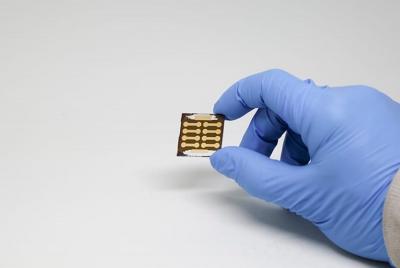Researchers at the University of Toronto have designed a method of growing a more stable electron selective layer for perovskite solar cells and tandem solar cells combining crystalline silicon with perovskite.

Perovskite raw materials can be mixed into a liquid in a kind of 'solar ink.' This solar ink could be printed onto glass, plastic or other materials with a relatively simple inkjet printing process. However, in order to generate electricity, electrons excited by solar energy from perovskite cells must be extracted from a layer of quantum dots that is held together by a passivation layer. Some types of quantum dots are known to change their 3D structure even at room temperature, making them transparent and ineffective. This passivation layer is also known to break down at temperatures above 100°C. The team's breakthrough made both quantum dots and perovskites more stable when combined than they are separated and the solar cell combining of Perovskite material and quantum dots achieved 20.1% efficiency.
The research team developed a new process that enables them to grow an ESL or passivation layer made of nanoparticles in solution. This solution can be grown directly on top of the electrode. While heat is still needed, the process always stays below 150°C, a much lower temperature than the melting point of many plastics.

